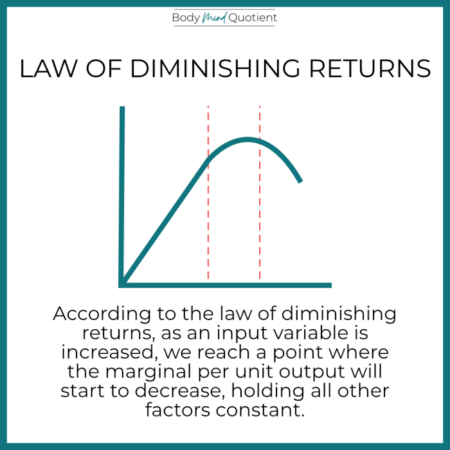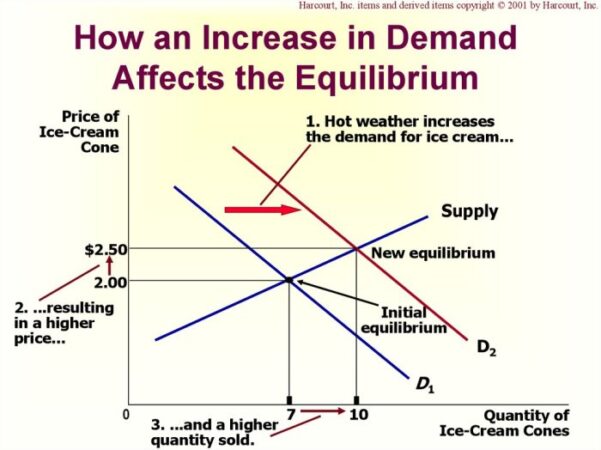
What is the law supply – What is the law of supply? This fundamental economic principle governs the relationship between the price of a good or service and the quantity that producers are willing to offer in the market. Understanding the law of supply is crucial for comprehending how markets function and how prices are determined. The law of supply states that, all else being equal, as the price of a good or service increases, the quantity supplied will also increase.
This relationship is driven by the incentives faced by producers. When prices rise, producers are encouraged to produce more because they can earn higher profits. Conversely, when prices fall, producers may choose to reduce their output or even exit the market altogether. The law of supply is a powerful tool for understanding how markets respond to changes in prices and other factors that influence production costs and consumer demand.
The Concept of Supply in Economics

Supply, in economics, refers to the total amount of a specific good or service that producers are willing and able to offer for sale at a given price in a given time period. It is a fundamental concept in understanding how markets function and how prices are determined.
Relationship Between Price and Quantity Supplied
The relationship between price and quantity supplied is a cornerstone of supply. Generally, as the price of a good or service increases, the quantity supplied by producers also tends to increase. This positive relationship is known as the law of supply. Producers are more willing to supply more of a good when they can earn a higher profit by selling it at a higher price.
Factors That Shift the Supply Curve
Several factors can influence the supply of a good or service, causing the supply curve to shift. These factors are not related to the price of the good itself but rather to external influences.
- Cost of Production: Changes in the cost of inputs, such as labor, raw materials, or energy, can affect the profitability of production. If the cost of production increases, the supply curve shifts to the left, indicating a decrease in the quantity supplied at each price level. Conversely, a decrease in production costs would shift the supply curve to the right, indicating an increase in the quantity supplied.
- Technology: Technological advancements can improve production efficiency, leading to lower production costs and potentially increasing supply. For example, the development of new farming techniques could increase agricultural output, shifting the supply curve for agricultural products to the right.
- Government Policies: Government policies, such as taxes, subsidies, or regulations, can impact the supply of goods and services. For instance, a tax on production would increase the cost of production, shifting the supply curve to the left. Conversely, a subsidy would reduce the cost of production, shifting the supply curve to the right.
- Number of Sellers: An increase in the number of producers in a market will lead to an increase in supply, shifting the supply curve to the right. Conversely, a decrease in the number of producers will lead to a decrease in supply, shifting the supply curve to the left.
- Expectations: Producers’ expectations about future prices can influence their current supply decisions. For example, if producers expect the price of a good to rise in the future, they might choose to hold back some of their current supply, leading to a decrease in supply in the present.
The Law of Supply

The law of supply is a fundamental principle in economics that describes the relationship between the price of a good or service and the quantity that sellers are willing and able to offer for sale in a given time period. It states that, all other factors remaining constant, the quantity supplied of a good or service will increase as the price of that good or service increases. In other words, producers are motivated to offer more of a product when they can sell it at a higher price.
Assumptions Underlying the Law of Supply
The law of supply is based on several key assumptions:
- Producers aim to maximize profits: Businesses are driven by the desire to make a profit, and they will adjust their production levels to maximize their earnings.
- Production costs are constant: The law of supply assumes that the costs associated with producing a good or service remain relatively stable. This allows producers to focus on the impact of price changes on their supply decisions.
- Technology remains unchanged: Technological advancements can influence the cost and efficiency of production, so the law of supply assumes that technology remains relatively stable over the period being considered.
- No government intervention: The law of supply assumes that there are no government regulations or policies that directly impact the supply of goods or services.
The Direct Relationship Between Price and Quantity Supplied
The law of supply states that there is a direct relationship between the price of a good or service and the quantity supplied. This means that as the price increases, the quantity supplied will also increase, and vice versa. This relationship is represented by an upward-sloping supply curve.
Graphical Representation of the Law of Supply
The law of supply can be illustrated graphically using a supply curve. The supply curve is a graphical representation of the relationship between the price of a good or service and the quantity supplied. The curve is upward-sloping, indicating that as the price increases, the quantity supplied also increases.
The supply curve is a graphical representation of the law of supply, showing the relationship between price and quantity supplied.
Factors Influencing Supply

The law of supply states that, all other factors being equal, as the price of a good or service increases, the quantity supplied of that good or service will also increase. However, the supply of a good or service is not only determined by its price. Several other factors can influence the quantity of a good or service that producers are willing and able to offer for sale at a given price.
These factors are known as determinants of supply. They can be grouped into five main categories:
Price of Inputs
The price of inputs is one of the most important factors influencing supply. Inputs are the resources used to produce goods and services, such as labor, capital, land, and raw materials. When the price of inputs increases, the cost of production also increases. This makes it less profitable for producers to supply the good or service at the current price, leading to a decrease in supply. Conversely, a decrease in the price of inputs will lead to an increase in supply.
For example, if the price of oil increases, the cost of producing gasoline will also increase. This will lead to a decrease in the supply of gasoline, as producers will be less willing to produce gasoline at the current price.
Technology, What is the law supply
Technological advancements can significantly impact supply. New technologies can often lead to more efficient production methods, which can reduce the cost of production. This makes it more profitable for producers to supply the good or service at the current price, leading to an increase in supply.
For example, the development of the assembly line in the early 20th century allowed for the mass production of automobiles. This led to a significant increase in the supply of automobiles, making them more affordable for consumers.
Government Regulations
Government regulations can also influence supply. Regulations can increase the cost of production, such as environmental regulations or safety regulations. This can lead to a decrease in supply. On the other hand, government subsidies can reduce the cost of production, leading to an increase in supply.
For example, the government might impose regulations on the production of certain chemicals, requiring producers to install expensive pollution control equipment. This will increase the cost of production, leading to a decrease in the supply of those chemicals.
Expectations
Producers’ expectations about future prices, input costs, and demand can also influence supply. If producers expect the price of a good or service to increase in the future, they may choose to hold back some of their supply now, hoping to sell it at a higher price later. This can lead to a decrease in supply in the short term. Conversely, if producers expect the price of a good or service to decrease in the future, they may increase their supply now to take advantage of the higher price.
For example, if farmers expect the price of wheat to increase in the future, they may choose to store some of their wheat rather than sell it immediately. This can lead to a decrease in the supply of wheat in the short term.
Number of Suppliers
The number of suppliers in a market can also affect supply. If there are more suppliers in a market, the supply will increase. This is because more producers are willing and able to offer the good or service for sale. Conversely, if there are fewer suppliers in a market, the supply will decrease.
For example, if there are only a few companies that produce a particular type of software, the supply of that software will be limited. However, if more companies enter the market and start producing that software, the supply will increase.
Table of Factors Influencing Supply
| Factor | Impact on Supply | Example |
|—|—|—|
| Price of Inputs | Increase in input prices leads to a decrease in supply. Decrease in input prices leads to an increase in supply. | An increase in the price of oil will lead to a decrease in the supply of gasoline. |
| Technology | Technological advancements can lead to an increase in supply. | The development of the assembly line led to an increase in the supply of automobiles. |
| Government Regulations | Regulations can increase the cost of production, leading to a decrease in supply. Subsidies can reduce the cost of production, leading to an increase in supply. | Regulations on the production of certain chemicals can lead to a decrease in the supply of those chemicals. |
| Expectations | Expectations about future prices, input costs, and demand can influence supply. | Farmers may store some of their wheat if they expect the price to increase in the future, leading to a decrease in the supply of wheat. |
| Number of Suppliers | More suppliers lead to an increase in supply. Fewer suppliers lead to a decrease in supply. | The supply of software will increase if more companies enter the market and start producing that software. |
Elasticity of Supply: What Is The Law Supply
The elasticity of supply measures how responsive the quantity supplied of a good or service is to changes in its price. In other words, it tells us how much the quantity supplied changes when the price changes.
Elastic and Inelastic Supply
The elasticity of supply can be classified as elastic or inelastic.
- Elastic supply occurs when the quantity supplied of a good or service changes significantly in response to a price change. In this case, the percentage change in quantity supplied is greater than the percentage change in price. For example, if the price of a good increases by 10%, and the quantity supplied increases by 20%, the supply is elastic.
- Inelastic supply occurs when the quantity supplied of a good or service changes very little or not at all in response to a price change. In this case, the percentage change in quantity supplied is less than the percentage change in price. For example, if the price of a good increases by 10%, and the quantity supplied increases by only 5%, the supply is inelastic.
Factors Determining Elasticity of Supply
Several factors influence the elasticity of supply for different goods or services:
- Availability of Resources: When resources are readily available, the supply is more elastic. For example, if there is an abundance of land suitable for growing wheat, the supply of wheat is likely to be elastic. Conversely, if resources are scarce, the supply is more inelastic. For instance, if there are limited deposits of a rare mineral, the supply of that mineral is likely to be inelastic.
- Time: The longer the time period considered, the more elastic the supply tends to be. This is because producers have more time to adjust their production levels in response to price changes. For example, in the short run, the supply of gasoline might be inelastic because producers cannot quickly increase production. However, in the long run, the supply of gasoline is likely to be more elastic as producers can invest in new refineries and expand production capacity.
- Production Process: If the production process is complex and requires specialized equipment or skilled labor, the supply is likely to be less elastic. For example, the supply of airplanes is likely to be inelastic because it takes a long time to build an airplane and requires specialized skills and equipment.
- Inventory Levels: If producers have large inventories, they can respond to price changes more quickly, making the supply more elastic. Conversely, if inventories are low, the supply is likely to be less elastic.
- Substitutes: The availability of substitutes for a good or service can also affect the elasticity of supply. If there are many substitutes, the supply is more elastic because producers can switch to producing substitutes if the price of the original good falls.
Summary
The law of supply is a cornerstone of economic theory, providing a framework for understanding how markets function and how prices are determined. By analyzing the factors that influence supply, we can gain valuable insights into the behavior of producers and the dynamics of market equilibrium. The law of supply has far-reaching implications for businesses, policymakers, and consumers alike, influencing decisions related to production, pricing, and consumption.
Clarifying Questions
What are some real-world examples of the law of supply in action?
One example is the market for agricultural products. During periods of drought or other adverse weather conditions, the supply of agricultural products may decrease, leading to higher prices. Conversely, when there is a bumper harvest, the supply increases, and prices tend to fall.
How does the law of supply relate to the concept of scarcity?
Scarcity is a fundamental economic concept that refers to the limited availability of resources relative to unlimited wants. The law of supply reflects this scarcity by showing how producers respond to limited resources by adjusting their output in response to changes in price.
What are some factors that can shift the supply curve?
Several factors can shift the supply curve, including changes in the cost of production, technology, government regulations, and expectations about future prices. For example, a decrease in the cost of labor or raw materials would shift the supply curve to the right, indicating an increase in supply at all prices.
